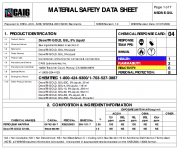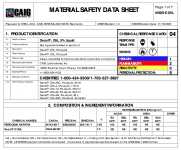I meticulously made 8 sets of rca’s using Cardas 60/40 solder, while flushing with c02 and cleaned seald with deoxit G5 gold, and enamel clear coat over the solder joints. The problem lies with my flux. I used a self-cleaning acid zinc chloride flux. Should I redo them? Because I read In metallurgy articles that the joint will fail pretty quickly because of the wrong flux. I wouldn’t worry, but they are going to be installed were I can’t get them back out.
acid zinc chloride flux.

A definite no no.
Cut at least 2 inches of the cable and junk those RCA connectors, use new ones.
To increase wettability scratch (or Deremel wire brush) the soldering surfaces, so you have clean shiny metal.
Most kit assembly manuals contain the warning:
"Use only rosin core solder"
or
"Do NOT use acid core solder"
Otherwise they will *soon* turn into green crumbling copper. Ugh !!
Sounds like snake oil.....deoxit G5 gold
This sounds like a comedy of errors:I meticulously made 8 sets of rca’s using Cardas 60/40 solder, while flushing with c02 and cleaned seald with deoxit G5 gold, and enamel clear coat over the solder joints.
1) Flushing with carbon dioxide?! You're soldering, not welding...
2) Cleaned with Deoxit G5 Gold? This is a lubricating contact cleaner containing almost 75% petroleum naphta, aka 'oil.' Once you have properly soldered the joint, it is no longer a 'contact' or 'connector,' but a permanent mechanical joint.
3)Enamel clear coat? Over the oil, and over a solder joint? Why?! To poison yourself when you have to re-work it?
Cardas 60/40 is good enough solder, so stick to the basics of good soldering practice...
To Andersonix, I read some very detailed instructions on my method for soldering that also included reasons for those steps. I followed them to the "T".
1) It said That factory made cables are soldered and assembled in this o2 free environment, so there corrosion over time.
2) Detox it D5 is a cleaner G5 is a sealant, I think you confused the 2.
3)Before I seal, I clean the joint with alcohol, the seal with enamel is to keep corrosion out permanently.
1) It said That factory made cables are soldered and assembled in this o2 free environment, so there corrosion over time.
2) Detox it D5 is a cleaner G5 is a sealant, I think you confused the 2.
3)Before I seal, I clean the joint with alcohol, the seal with enamel is to keep corrosion out permanently.
2) Detox it D5 is a cleaner G5 is a sealant, I think you confused the 2.
No, in this case I'm not confused: I looked up the MSDS for what you said you used (G5) and reported what I read. Now I have also looked up the MSDS for D5, and they appear to be EXACTLY the same stuff...
Please help yourself to all the Caig MSDS:
MSDS - By Category (New GHS Format)
Attachments
Deoxit is great stuff (helps keep an LED video wall working near the ocean) but I can't see it as good for solder prep. Anyhow, you've got the answer on the acid flux, not a good idea.
Of course I wonder how those copper pipes keep from corroding away to nothing over the years, once they've been solder with acid core flux....
Of course I wonder how those copper pipes keep from corroding away to nothing over the years, once they've been solder with acid core flux....
I meticulously made 8 sets of rca’s using Cardas 60/40 solder, while flushing with c02 and cleaned seald with deoxit G5 gold, and enamel clear coat over the solder joints. The problem lies with my flux. I used a self-cleaning acid zinc chloride flux. Should I redo them? Because I read In metallurgy articles that the joint will fail pretty quickly because of the wrong flux. I wouldn’t worry, but they are going to be installed were I can’t get them back out.
Wow!.....I've never heard of any of "that" sort of process to solder any connector far less a RCA one....just out of curiosity where and how did you come up with this procedure?
To djmeverett; I regretfully cannot find the sources of the articles I read, I had cut and pasted them to Word document and printed them out. However I do know it was in tech articles about metallurgy. The primary source was very tedious to get through, but I did complete it to full understanding. It went very deeply into the perfect solder joint and the effects off keeping all oxygen out off of the strands and away from the actual soldering event. The same way that o2 free copper is desirable, and the shielding of cable blocking o2 from getting to the copper, soldering in co2 and Coating in epoxy is the same long lasting, corrosion free positive effect you get from as fully encapsulating the ends in plastic like many factory made cables. This meticulous process keeps moisture and o2 out keeping the cable and joint corrosion free for many many years longer than basic soldering.
I was confused by the difference between D5 and G5, so I had called a tech at Detoxit. I followed the order they recommended as far as using the D5 as a cleaner, to get the flux of after soldering, and the G5 as a sealer before screwing the rca end back together. They may be pulling my leg, but I am convinced and I would do it again. I don't see why people are not believers in sealing wire connections like I am. Considering that we know o2 and moisture corrode, and this will greatly slow that process. Please read my reply to djmeverett also.
'Basic soldering' joints are known to last for at least 80 years - we know that because old radio sets still work. My bet is that 'fancy soldering', except where done for valid reasons by a real expert (e.g. space probes?), won't last as long.deriklfixit said:This meticulous process keeps moisture and o2 out keeping the cable and joint corrosion free for many many years longer than basic soldering.
To djmeverett; I regretfully cannot find the sources of the articles I read, I had cut and pasted them to Word document and printed them out. However I do know it was in tech articles about metallurgy. The primary source was very tedious to get through, but I did complete it to full understanding. It went very deeply into the perfect solder joint and the effects off keeping all oxygen out off of the strands and away from the actual soldering event. The same way that o2 free copper is desirable, and the shielding of cable blocking o2 from getting to the copper, soldering in co2 and Coating in epoxy is the same long lasting, corrosion free positive effect you get from as fully encapsulating the ends in plastic like many factory made cables. This meticulous process keeps moisture and o2 out keeping the cable and joint corrosion free for many many years longer than basic soldering.
I would recommend and refer you to the IPC STD for Mil & Aerospace soldering as your best soldering practice and process if you want to follow such rigid requirements in your application.
FWIW...Unless you are doing this for some critical application, it isn't really necessary for audio....standard 60/40 solder, standard solder flux and a quality iron are all that is needed.
It's far more important to achieve a good mechanical joint over any other process you apply after that fact.
If you want to get into it here is a link to some accurate info.
There are free resources and explanations there.
How to Create the Perfect Solder Joint | EPTAC
- Status
- This old topic is closed. If you want to reopen this topic, contact a moderator using the "Report Post" button.
- Home
- Design & Build
- Construction Tips
- Soldering rca's ends with wrong flux

